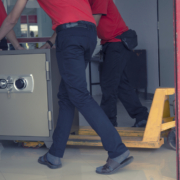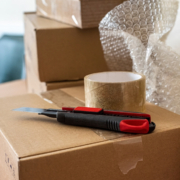How to Move a Bed Cross Country?
How to move a bed cross country? Moving a bed cross country requires careful planning and preparation to ensure that your bed arrives safely and intact at your new destination. In this comprehensive guide by Cheap Movers Costa Mesa, we’ll provide you with expert tips and strategies to help you navigate the process smoothly and efficiently.
How to Move a Bed Cross Country?
1. Disassemble the Bed Frame:
- Start by disassembling the bed frame, including removing the headboard, footboard, side rails, and slats.
- Keep all screws, bolts, and other hardware in a labeled bag or container to avoid losing them during the move.
2. Protect the Mattress and Box Spring:
- Use mattress and box spring covers or heavy-duty plastic wrap to protect them from dust, dirt, and moisture during transit.
- Consider investing in mattress bags specifically designed for moving to provide extra protection.
3. Wrap Fragile Components:
- Wrap any fragile components, such as decorative finials or ornate headboards, with bubble wrap or moving blankets to prevent damage.
- Secure the wrapping with packing tape to keep it in place during transport.
4. Use Furniture Blankets:
- Wrap each disassembled part of the bed frame in furniture blankets or moving pads to protect them from scratches and dents.
- Secure the blankets with packing tape or furniture straps to ensure they stay in place during transit.
5. Securely Pack Hardware:
- Place all hardware, including screws, bolts, and nuts, in a plastic bag or container and label it clearly.
- Tape the bag securely to one of the bed frame components or place it inside a labeled box for easy identification upon arrival.
6. Choose the Right Moving Vehicle:
- Rent a moving truck or trailer that is large enough to accommodate the disassembled bed frame, mattress, and box spring.
- Ensure that the vehicle is equipped with proper tie-downs or straps to secure the bed components during transit.
7. Load the Bed Components Safely:
- Load the disassembled bed components into the moving vehicle carefully, placing heavier items on the bottom and lighter items on top.
- Use moving straps or tie-downs to secure the bed components to the walls or floor of the vehicle to prevent shifting during transit.
8. Protect Against Damage:
- Place additional padding or cushioning between bed components and other items in the moving vehicle to prevent damage from shifting during transit.
- Avoid placing heavy items on top of the mattress or box spring to prevent them from being crushed or damaged.
9. Drive Safely and Securely:
- Drive cautiously and adhere to all traffic laws and regulations to ensure the safety of yourself and your belongings during transit.
- Check the load periodically during the journey to ensure that the bed components remain secure and undamaged.
10. Unload and Reassemble Carefully:
- Upon arrival at your new destination, unload the bed components carefully and reassemble the bed frame according to the manufacturer’s instructions.
- Take your time to ensure that all components are securely fastened and properly aligned before placing the mattress and box spring back on the frame.
Conclusion:
Moving a bed cross country can be a challenging task, but with the right preparation and precautions, you can ensure that your bed arrives safely and ready to use at your new home. By following these expert tips from Cheap Movers Costa Mesa, you can streamline the process and enjoy a smooth transition to your new living space.




 How to Prepare for Moving Day?
How to Prepare for Moving Day?  moving heavy furniture and boxes
moving heavy furniture and boxes  How to Pack Lamps for Moving?
How to Pack Lamps for Moving?  How to Pack a Vacuum Cleaner for Moving?
How to Pack a Vacuum Cleaner for Moving? How to Pack Knives For Moving?
How to Pack Knives For Moving?  What to do With Your Food When Moving?
What to do With Your Food When Moving? 7 Things to do on The First Day in a New Home
7 Things to do on The First Day in a New Home